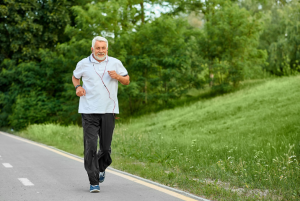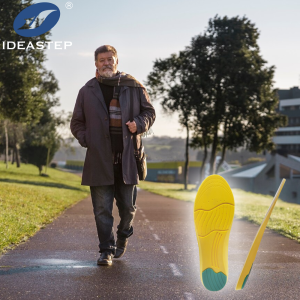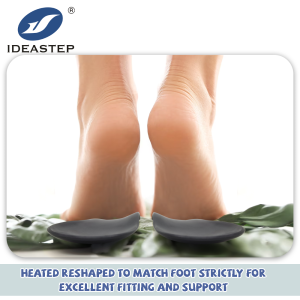Slip-resistant shoes are essential for preventing accidents and injuries on slippery surfaces. One key component of these shoes is the outsole, specifically the material used for the sole. While all slip-resistant shoes have rubber soles, not all rubber soles are created equal in terms of slip resistance. The best outsoles for slip-resistant shoes are made with a soft rubber material that is capable of withstanding oil and grease, with deep treads to provide maximum grip and traction. When choosing slip-resistant shoes, it is important to look for outsoles made from high-quality, soft rubber with deep treads. This combination will ensure that the shoes provide the necessary traction to keep you safe on slippery surfaces. By investing in shoes with the right materials, you can significantly reduce the risk of accidents and injuries caused by slips and falls.

Table of Contents
- Which material is most recommended for anti-slip soles?
- Is it possible to insert insoles into barefoot shoes?
- Can you please explain what the material of Eva insole is?
Which material is most recommended for anti-slip soles?
Slip-resistant shoes are essential for preventing accidents and injuries on slippery surfaces. One key component of these shoes is the outsole, specifically the material used for the sole. While all slip-resistant shoes have rubber soles, not all rubber soles are created equal in terms of slip resistance.
The best outsoles for slip-resistant shoes are made with a soft rubber material that is capable of withstanding oil and grease. Additionally, these outsoles must be treaded to provide maximum grip and traction. Tread refers to the grooves in the outsole that help enhance the shoe’s friction on surfaces. Without proper tread, even the best rubber material may not be effective in preventing slips and falls.
When choosing slip-resistant shoes, it is important to look for outsoles made from high-quality, soft rubber with deep treads. This combination will ensure that the shoes provide the necessary traction to keep you safe on slippery surfaces. By investing in shoes with the right materials, you can significantly reduce the risk of accidents and injuries caused by slips and falls.

Is it possible to insert insoles into barefoot shoes?
1. Barefoot shoes provide a unique experience by allowing wearers to feel the ground beneath them through a thin sole.
2. This sensation can be unusual for those accustomed to wearing thick-soled shoes, especially if they have weak foot arches.
3. To enhance comfort and support, insoles can be added to barefoot shoes.
4. Insoles can be found among the accessories offered by the brand that sells barefoot shoes.
5. Wearing insoles in barefoot shoes is recommended for individuals with weak foot arches to prevent discomfort and provide additional support.
6. By incorporating insoles, wearers can customize their barefoot shoes to better suit their individual needs and preferences.
7. Overall, insoles offer a practical solution for improving the fit and feel of barefoot shoes, enhancing the overall wearing experience.

Can you please explain what the material of Eva insole is?
An EVA insole material, short for Ethyl Vinyl Acetate, is a type of foam material that bears a striking resemblance to rubber. This material is known for its natural stretchiness and rubber-like attributes, including softness and flexibility.
One of the key advantages of EVA insole material is its ability to provide cushioning and support, making it a popular choice for footwear manufacturers. The foam material is lightweight and comfortable, making it ideal for everyday wear. Additionally, EVA insoles are known for their shock-absorbing properties, which help to reduce pressure on the feet and joints during physical activities.
For example, athletes often rely on EVA insoles to enhance their performance and reduce the risk of injury. The cushioning provided by EVA material helps to minimize the impact on the feet and legs, allowing athletes to train longer and harder without experiencing discomfort.
In conclusion, EVA insole material is a versatile and practical option for footwear, offering comfort, support, and durability. Its unique properties make it a popular choice for a wide range of applications, from everyday wear to sports performance enhancement.

FAQ
1.Question:
What is the recommended material for anti-slip soles in slip-resistant shoes?
Answer:
The most recommended material for anti-slip soles in slip-resistant shoes is soft rubber with deep treads for maximum grip and traction.
2.Question:
Is it possible to insert insoles into barefoot shoes for added comfort and support?
Answer:
Yes, it is possible to insert insoles into barefoot shoes to enhance comfort, provide additional support, and customize the fit according to individual needs.
3.Question:
What is EVA insole material, and what are its key attributes?
Answer:
EVA insole material, short for Ethyl Vinyl Acetate, is a foam material with rubber-like attributes such as softness, flexibility, cushioning, and shock-absorbing properties, making it a popular choice for footwear for its comfort and support.



